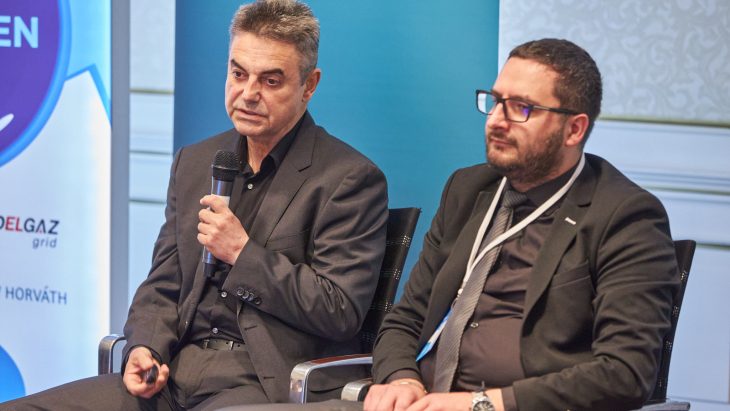Romania has set extremely ambitious targets for reducing its annual CO2 emissions and, based on the available data, is unlikely to meet them, said Cătălin Stancu, Senior Expert at the Horváth consulting firm.
“This is very-very much. The question is how quickly will we be able to reinvent technologies that we have mostly known about for decades? If so far Romania has reduced its pollution by restructuring energy-intensive sectors, this will not happen again,” Stancu said, at the conference “Hydrogen Project – what is Romania up to”, organised by Energynomics.
Romania needs 10.3 TWh of renewable energy (equivalent to 17.6% of the country’s total demand in 2021) to be able to produce enough green hydrogen to cover the annual demand of 153,000 tonnes (of which 57,000 tonnes in industry and 72,400 metric tonnes in transport).
Using this amount of green hydrogen would cut the country’s carbon emissions by just two million tonneswhich is only about 3% of the reduction needed to reach the targets.. According to them, Romania is to reduce its emissions within five years from 80 to 50 million tonnes a year.
According to Stancu, the most difficult objective is to reduce emissions in the transport sector after 2030, especially since this industry has grown the most in the last 20 years in Romania. But he said hydrogen will not be able to replace electricity in rail transport or in the public transport sector in cities. On the other hand, electricity and hydrogen are not competing technologies, but have applications in different sectors.
In addition, Romania wants to have 2 GW of electrolysis capacity and an additional 4 GW of green power units on top of the 14,000 MW of green power announced by investors.
“Hydrolysis must have dedicated green energy. So we’re talking about 18,000 MW of green power generation capacity that should be realised in six years. That’s an extraordinary amount of work over the next five years,” he added.
DOWNLOAD THE PRESENTATION OF CĂTĂLIN STANCU
Another crucial issue is the price of hydrogen, which, according to Stancu, will depend on the speed with which Romania manages to implement new renewable energy production capacity (wind, solar and hydro). The success of Romania’s plan to have industries structured around the use of hydrogen will also depend on this.
“Pragmatically speaking, we have problems we need to solve. If for years dozens of experts have been saying that in certain industries hydrogen seems to be the only solution, then that’s the answer. The rest are details. If you don’t have a better solution, the one you have is the one you have to use. The hydrogen strategy is just a small piece for Romania to reach its 2050 targets,” said Stancu.
The conference “Hydrogen Project – what is Romania up to” was organized by Energynomics with the support of our partners Elektra Renewable Support and Horváth.
On this occasion, the Didactic and Pedagogical Publishing House presented the book “Discussions the Hydrogen Energy Vector”, authored by Ioan Iordache, Dumitru Chisăliță, Hans Marius Shuster, Cristian Călin, and Oana Dumitrean, as part of the collection “Academica energie.”
